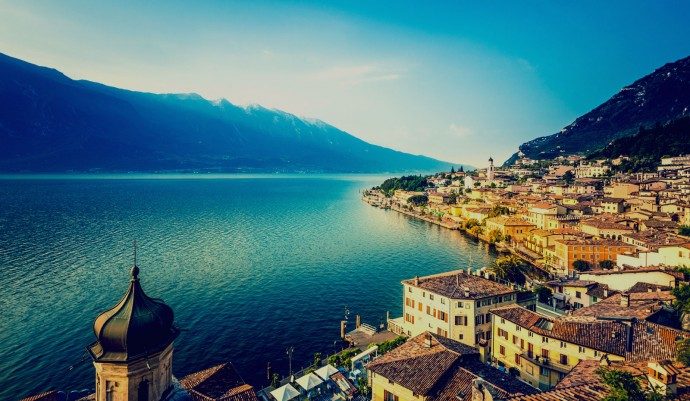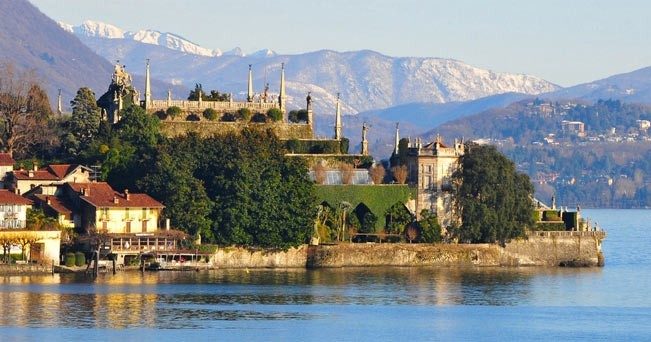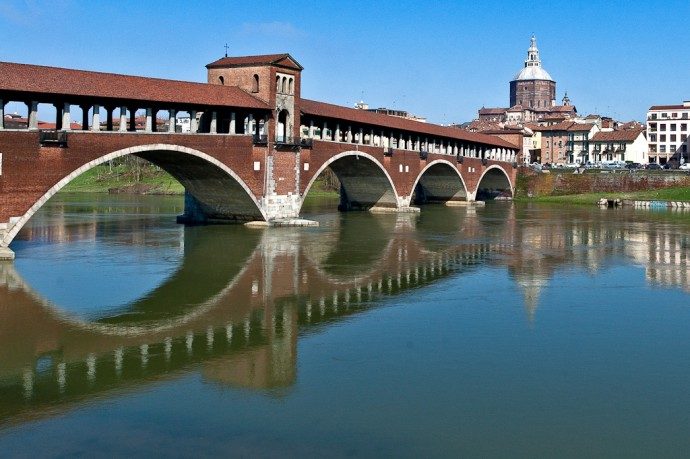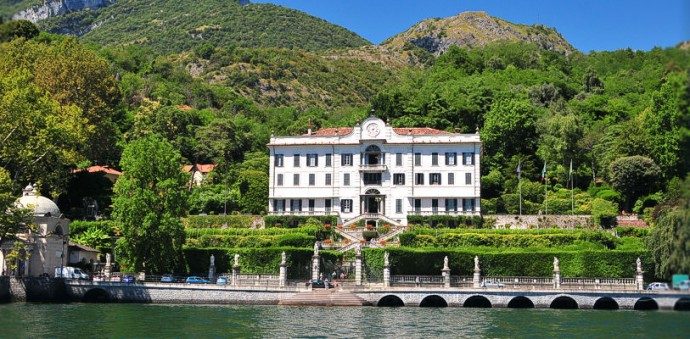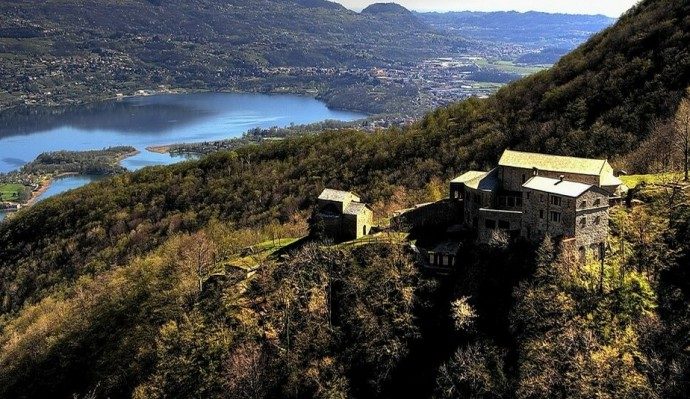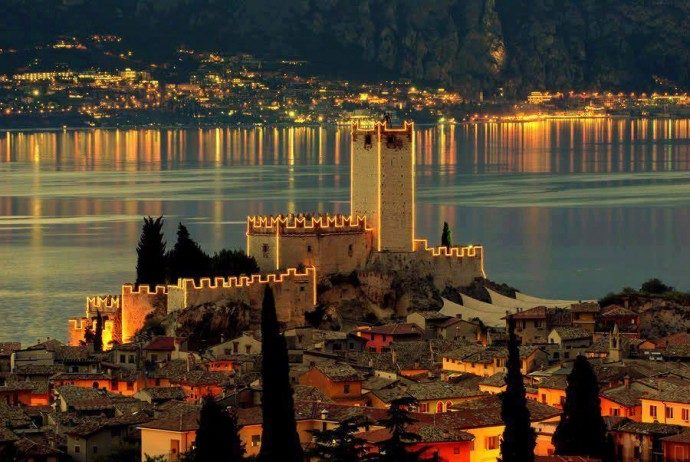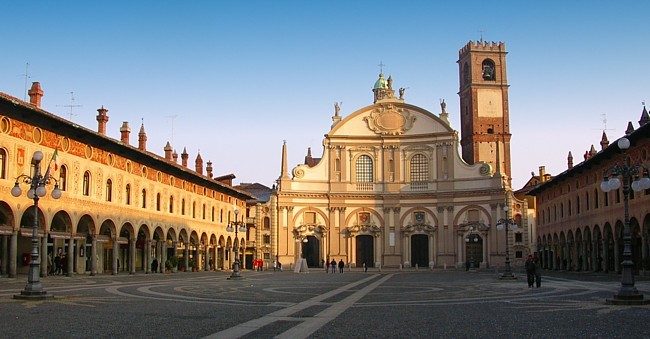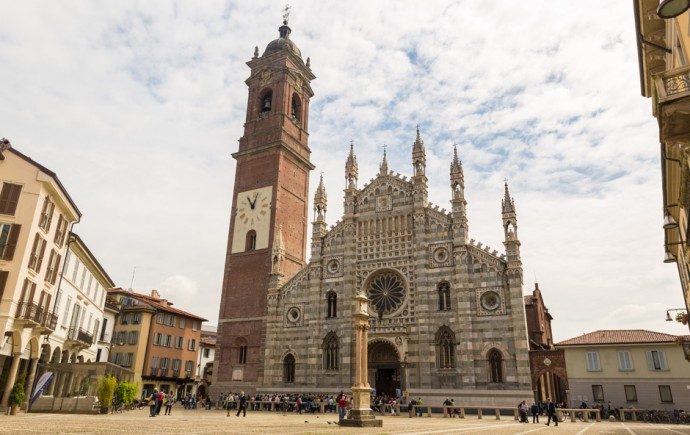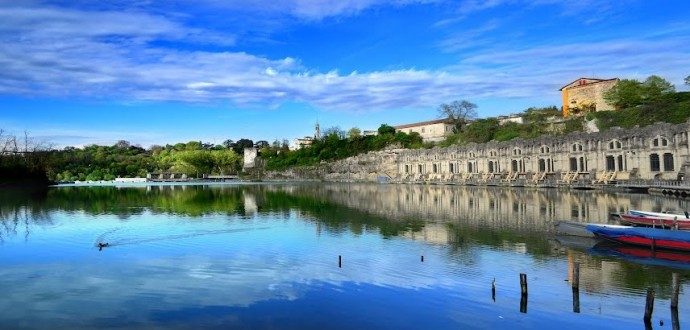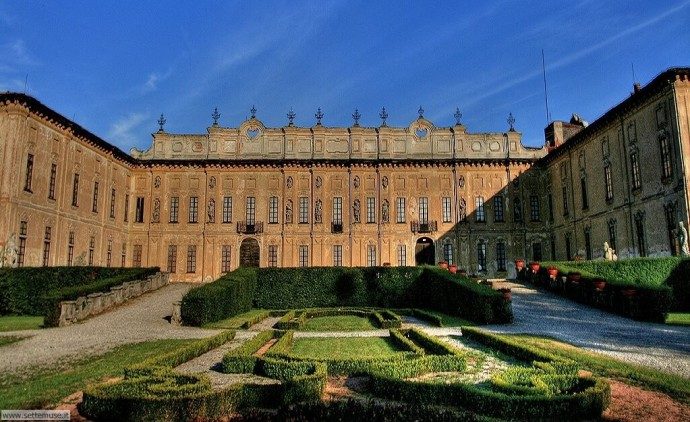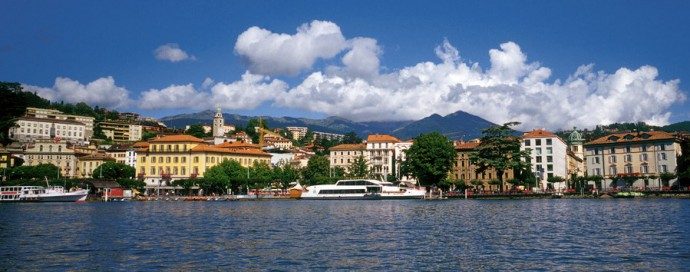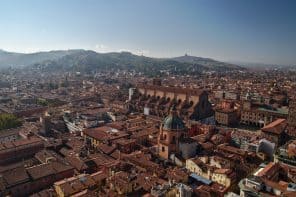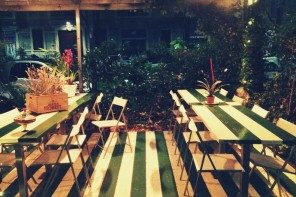Our suggestions for a day trip from Milan
Lago Maggiore – Isole Borromee
The second largest lake in Italy, after Lago di Garda, Maggiore stretches over the Swiss-Italian border. The islands of Bella, Madre and Pescatori are hidden treasures of Lago Maggiore. From the typical northern Italian lake town, Stresa, you can visit the three beautiful islands in one 5-hour tour, or spend the day exploring just one of these quaint isole.
When in 1630, Carlo Borromeo bought the rocky fishers’ island to build his palace on, he transformed it (with the help of some important architects of the day) into a little piece of paradise on earth.
Today, Isola Bella is still considered one of the most beautiful Baroque gardens in Europe. Isola Madre, with its lush fruit garden was the beautiful, summer holiday residence of the Borromeo. Citrus trees, vines, exotic plants and flowers for every season invite you to cherish every moment you spend in this magic island. Isola Pescatori is the only one of the three islands that doesn’t belong to the Borromeo family. Until only a half a century ago it was a quiet fishers’ island. Now it’s frequently visited and loved by visitors from all over the world; and yet, it offers you an the absolutely charming and relaxing environment needed for a short break from the city.
How to get there:
Trenitalia: From Milano centrale to Stresa (1h8min)
Trenord From Milano Cadorna to Laveno (1h31min)
Ferries from Piazzale Lido, Stresa:
Isola Bella € 4,50/ Isola Pescatori € 7,00/ Isola Madre € 9,00/
Isola Bella e Pescatori € 8,50
Isola Bella, Madre e Pescatori € 10,50
Pavia
The first capital city of the Kingdom of the Lombards (568-774 AD), and later of (all) Italy, Pavia isn’t lacking in historical and artistic importance. It has one of the country’s oldest and most beautiful universities, and the famous physician Alessandro Volta, who discovered methane, as well as the anatomist-doctor Antonio Scarpa both taught there. The city’s monuments, churches, architecture and arts exude historical significance. The Ponte Coperto- bridge, built in 1352, is famous for its roof and connects the historic center with a colorful fishers’ village. The beautiful Roman bridge, with its “Three Towers” is another symbol of the city, which gave it, the old nick name of “the city of hundreds of towers.” Pavia has also a rich religious past. Cripta di Sant’Eusebio a church, which is now reduced to a crypt, became a focal point for the Lombards’ conversion to Catholicism, a faith supported by the King Ariperto.
The Ticino and Po rivers, which nourish the rich agriculture and cultural development in the whole region meet in Pavia. One of the two canals of Milan designed by Leonardo Da Vinci, Naviglio Pavese stretches all the way from Milan’s Darsena to Pavia. Think about trying some fresh Northern Italian seafood too during your visit…
How to get there:
Frequent national trains from the Central Station – c.30min
Lago di Como – Villa Carlotta
The beauty of the lakeside of Como has always fascinated the Milanese artists and nobility. Its charm is not only appreciated for the recreation of the body and soul but it is also, admittedly a romantic place.
Villa Carlotta was built between the lake and the mountains by the Milanese marquis Giorgio Clerici at the end of the 17th century. An Italian style botanical garden with an abundance of sculptures adorn the villa’s landscape. It was later bought by an important politician and economist, Gian Battista Sommariva, who was also a passionate art collector. Thanks to him you can still find an impressive amount of important pieces of 19th century art, such as ‘Eros and Psyche’ of Tadolini, ‘Terpsichore’ of Canova, and ‘The last kiss of Romeo and Juliet’ of Hayez.
How to get there:
Train to Como from Milan Stazione Centrale or Garibaldi
Open from March to the 16th of October, at 9:30-19:30 (last admission at 18:00)
Entrance: € 9,00
Civate – Lago Annone
In a valley east of Lecco, at the foot of Monte Cornizzolo which faces Monte Barro, lies Civate-the city that divides lake Annone in two. The valley’s great outdoors offer a wide range of activities such as a day-hike: to go around the entire lake is c.18 kilometres, so less than a 10-hour walk ( if you don’t take breaks). You will get to see the other towns that circle around the lake: Annone di Brianza, Suello and Galbiate. Alternatively, you can explore the mysterious ancient Roman San Pietro church built on a nearby hill. Stunning views, far from tourist crowds coupled with the calm Italian country-side atmosphere are the ideal ingredients for a perfect city-escape.
How to get there:
Train from Milano Centrale or Porta garibaldi – c.1h-1h30min depending on the service
Lago di Garda
The Milanese have no reason to grieve over the fact that there is no seashore in sight. Italy’s northern regions are loved for their beautiful lakes on a mountainsides. Some of the Europeans’ absolute favorite holiday spots are situated around Garda Lake, the largest lake of Italy. Its particular geographical position offers an excellent selection of sports. The sandy lakeside caters to visitors with its beaches, restaurants and bars for a lively night-life. If you just can’t get enough of the sun and decide to stay for the weekend you’ll find accommodation from pretty basic camping to luxury hotels. But as you can imagine, it wasn’t the Northern European tourists who discovered the beauty of this natural paradise, but the Romans, who left their mark in the ancient fortified town of Sirmione. The home of Scaliger castle and Roman spa ruins, Sirmione is brimming with ancient fascination and holiday pleasures of all kinds of guests. In other towns you may visit several other castles and palaces, some of which are located in the five islands on the Garda Lake.
How to get there:
National railway connections from Milano Centrale to various lake towns around Garda, such as: Desenzano del Garda, Peschiera di Garda, and Riva del Garda – c.1h+
Vigevano
Vigevano is called “an ideal city” for its spectacular architecture and perfection in city planning. Its town square is lauded as the most impressive of the whole country. The beautiful renaissance Piazza Ducale, surrounded by a castle and a cathedral, was the vision of Ludovico il Moro. It was designed as “an entrance hall” to the castle, and was completed in 1492. The Castello Sforzeco is another architectural treasure from the late Middle Ages, at the beginning of the renaissance. The castle is actually a town inside of a town, with a cathedral three times of the size of Milano’s Duomo inside of it.
Leonardo Da Vinci is known to have worked as a ducal engineer for Ludovico il Moro for over twenty years. He was responsible for the castle and piazza, a vast network of the surrounding canals, as well as city planning. You can see more of Da Vinci’s engineering achievements exhibited at Mulino di Mora Bassa, a mill that Moro had built as a gift for his wife Beatrice d’Este. Thanks to the vast bodies of water (and an excellent water engineer) Vigevano’s surrounding areas are abundant in fertile rice land, and is the home of Lombardy National Park. Have you tried some of the region’s traditional cuisine, including their famous rice dishes?
How to get there:
Regional train from Milano Porta Genova (M2) – 30min
Monza and “Reggia di Monza”
The train to Monza is the easiest way to have a quick city break and see some green! The town is full of Northern Italy’s history and nobility. The quaint center is easily explored by winding through little streets and you can explore the Arengario, a city hall from the 13th century. There are usually street markets around the center selling locally produced cheese, bread and wine. The Cathedral of Monza is an effort that has lasted centuries, beginning back in the 6th century, and continuing in the 1300s with splendid white and green marble designed in the Pisan-Gothic style. However, it is more likely that you will remember Monza for Palazzo Reale and its huge park. The palace was built during the Austrian rule of Lombardy at the end of 18th century by Giuseppe Piermanini. In 1859, after the war of independence for the new Kingdom of Italy, the Savoy family moved in and was the last royal family to inhabit it. Now it belongs to the city of Monza; in March 2014 the Palazzo’s massive renovation works were completed and the space is now home to art exhibitions, events, a cafe and restaurant . The “Reggia Monza” palace grounds consist of several historical buildings that now function as restaurants, art galleries, a theatre, a library, hostels, and event venues. The Monza Park is the fourth largest closed park in Europe. Within the park you will find English rose gardens, animal farms, chapels, ancient mills, and everything in between!
How to get there:
Garbaldi (Trenord S7,9,11) | Centrale (Trenitalia) 15min
(Free shuttle bus from the railway station of Monza to the park)
More info: reggiadimonza.it
Trezzo sull’Adda
As its name suggests, the attractive town of Trezzo sull’Adda stands right by the Adda river. The 14th century castle with its long fortified bridge over the river is definitely the main historical sight of Trezzo. Built by the powerful Visconi family, Trezzo’s bloody history was continued by Frederick Redbeard and the Torriani family. Because of its strategic regional position it was attacked and destroyed during several conquests. Although it was rebuilt after each battle, what remains is the respectable tower and basement with the 72-meter long bridge. Trezzo’s art collection, located mainly in Villa Gardenghi, has awarded the city the title of ”the Art city of Lombardy” twice. In addition to its artistic and historic value Trezzo’s landscape was an inspiration to some of the most famous Italian masters such as Leonardo Da Vinci and Alessandro Manzoni. The area’s natural surroundings are protected by UNESCO and declared a World Heritage Site.
How to get there:
Take the green metro line(2) until Gessate, and from there the local ATM bus to Trezzo.
Villa Arconati
The years haven’t been able to wipe away the charm of Villa Arconati. Since April, the Villa is slowly revealing herself to the public in full elegance. This gorgeous medieval castle is located in the Parco della Groane in the hamlet of Castellazzo Bollate, not far from the Expo grounds. In 1610 Galeazzo Arconati bought the castle/palace and began to give it a new life. The passionate art lover brought his collection of ancient Roman sculptures, including the statue Pompey the Great that stands by the entrance on the ground floor. The second floor is decorated by the Galliari brothers’ allegorical frescos. Passed down through the generations of the Lombard Arconati family, the villa was finally completed in the spirit of the late baroque. Although it enjoys layers of different styles, the villa manages to keep its unique artistic unity.
In 2009, the Augosto Rancilio Foundation in conjunction with the city of Milan and a few other partners, began vast restoration projects. While parts of it are still being renovated the front is already finished, as well as several art pieces inside. Everyone can be part of Italy’s cultural heritage by participating in on-going exhibitions and events that partially fund the revival of Villa Arconati. The villa’s calendar is rich with programs of events around the theme of food and history: workshops, markets selling organic regional food and crafts, cooking lessons of baroque vintage dishes, photo exhibitions, international music festivals and more! Check out: villavarconati.it/eventi
How to get there:
Villa Arconati a Castellazzo, Via Madonna Fametta, Bollate
FS Cadorna S3 | Garibaldi S1 (treno suburbano)
Open from May to October, from Friday to Sunday at 10.30 – 18.30
Entrance fee: € 4,00 | Entrance to the main hall: € 7, 00
Lugano
You planned on coming to Italy, but did you realize that one of the most beautiful towns in Switzerland is only an hour train ride away from Milan? Surrounded by the snow-topped Alps, Lugano is simply stunning with its vibrant green and blue landscapes, fresh mountain air- the kind of natural beauty that dreams are made of. Just the train ride there through the mountain range is an experience in itself!
Despite its small size, Lugano’s rich culture and international economical influence definitely make it a world-class city. The walk through the charming city center brings you to the lake and Ciani Park. With its English-style gardens and century old trees, the park is a perfect place to relax and take in the beauty of the lake in front of you. Within the park you can also visit Villa Ciani, the Cantonal Museum of Natural History, Museo Civico di Belle Arti, the Palazzo dei Congressi, and the Cantonal Library. Or, if you just feel like relaxing in the open air why not rent a boat or go swimming? In case you want to enjoy more of the great outdoors of Switzerland there are over 700km of hiking trails that are easily accessible from the city with public transportation. You can find any almost any type of outdoor activity from mountain-biking to sailing. In addition, you can visit the beautiful Tassino and San Grato Parks that are located a few kilometers away.
How to get there:
Train: from Stazione Garibaldi or Centrale – c. 1h
Info: tilo.ch / trenitalia.com
Car: Highway A9/E35 (Autostrada A9/E35 dei Laghi) direction Como-San Gottardo – 1h 10min

